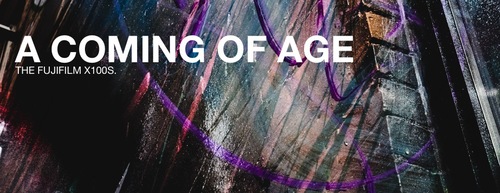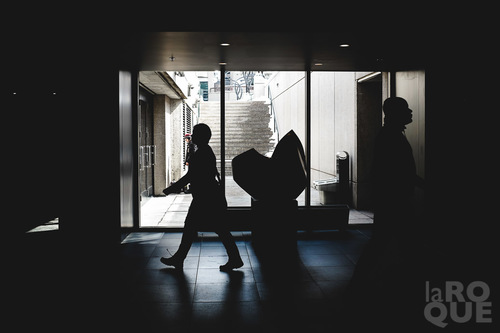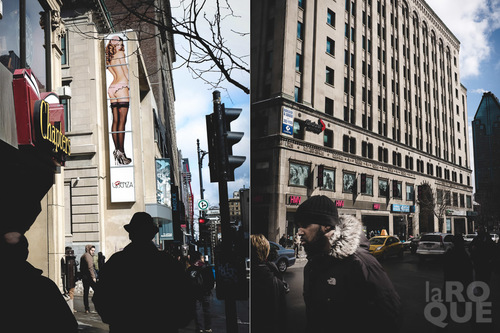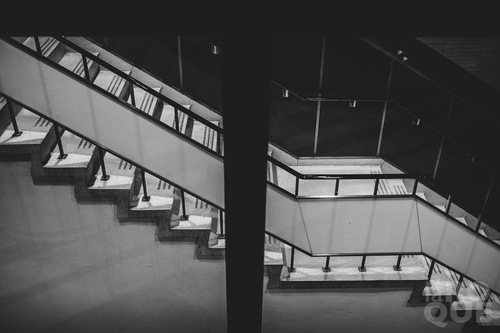
I longed for Istanbul. Or Madrid, Cairo, Rio. I longed for the circus, for freight trains, for a rush of uncertainty in long and aimless circumambulations; for an assault on the senses and a total loss of balance, making my way through the unknown, sinking in strange quicksand crowds with my eye to a small window. I wanted more and everything, the pulse of an insane city or the slow crashing of a wave on a deserted beach of the pacific rim. I wanted new topographics and new lights to twist reality, like opiates in the bloodstream, igniting the muse - her name would be Discovery. Testament. Witness.
What I found was the bleary grayish afterglow of March. Rain, then freezing winds and snow. I had to wait, fall back on proximity, struggling to reach for a semblance of greatness in the mundane. I was earthbound, holding onto the Golden Snitch; I felt the whirr of its wings in my hands, pushing to pry open my fingers and explode onto the world outside. I heard the hum of its nerves, the quickening of its metal heart.
I could've screamed.
And then, for a few short hours, winter finally relented. So I stepped into the morning sun
and I opened my hand.


I promised myself I wouldn't read Zack Arias' review before writing my own. I wanted to avoid falling into a kind of herd mentality spurred on by too much enthusiasm around the table. But curiosity got the best of me and I folded. I also read David Hobby's take as well — Hey, might as well eat the whole cake right?
Both gave extremely well thought out, glowing reviews that felt almost giddy with excitement. But see... There's a really good reason for that: less than two years after their arrival on the scene, the new X100S is nothing short of the X series cameras coming of age.
Colour me giddy as well.
SIBLINGS
First, just to be clear: I'm an official Fujifilm X- Photographer. But I wasn't paid for either this review or any of the images I shot with the camera. Fujifilm Canada graciously sent me the X100S so I could play with it and shoot images to my heart's content. This post is my own. No strings attached.Now, if you're a regular reader of this blog you know I don't do highly technical, pixel peeping reviews. No charts, no ISO comparisons on still life shots. Besides, if you're reading this I'm sure you've already read all there is to read on the specs of this camera, just as I did the very first day of its announcement.
Truth be told I had no intention of ever parting with my beloved X100. The idea of *upgrading* such a personal and important piece of gear just didn't compute. This was a classic, a gem in the rough that could never be replaced.
But Fuji have accomplished an amazing feat: they've touched and refined every single aspect of the original without messing with its soul. They listened; they went back to work. In every way the X100S is perfectly interchangeable with its predecessor except for one tiny little thing: it's a one way trip. A few weeks in and I can't imagine going back anymore. Sneaky? Uh... Yeah.
Damn it.

CH... CH... CH... CH... CHANGES.
At first it’s almost underwhelming. You open the box and it’s all the same: accessories, battery, lenscap. There isn’t even a slight wiff of that new car smell. In your hand it’s the same old friend and I almost expected the battle scars to transfer over. But the transformation is obvious as soon as you begin to shoot: it’s reactive beyond anything we’ve seen from the X cameras up to this point. This new AF system based on hybrid contrast/phase detection runs circles around the X100 and the X-Pro1. The manual focus ring is still fly by wire but it now almost feels mechanical — none of that slipping and sliding feeling you’d get with the previous version. If you’ve used the XF 14mm lens, that’s where we stand. And yes, focus peaking makes the process that much quicker and precise. Bottom line: if you like focussing manually, you can do so and then some; if you prefer AF, it works as well as a DSLR — As far as I’m concerned, that gap’s essentially closed.And at the risk of repeating myself… Thank god for that new AF button placement (moved to where the Macro button used to sit). No more awkward fiddling with your left hand (or just relying on focus/recompose to avoid the hassle), you can now operate the entire AF flow with your right thumb, just as you would on a DSLR: hit the AF button, choose a focus point with the arrows, half-press the shutter to go back to shooting mode. Boom. You can press Disp/Back to reset AF to the center point. All this without ever needing to take your eye off the viewfinder. Let me say it one last time: it’s a HUGE deal. Insert firmware hopes for previous models here.


NEW GENERATION
I love my X-Pro1. From day one I’ve been stunned by the richness and clarity of the images I’ve shot with it. Until recently that meant using the jpegs most of the time (yes, they’re THAT good) but with recent updates to LR4 and CP7 we’re finally seeing the potential of the X-Trans sensor slowly being realized with raw files. But: it IS different. Mostly, it renders very fine micro-details and smaller chaotic structures differently than its Bayer counterpart, making certain subjects slightly softer when viewed at 100%. Certain fabrics or textures will look different when compared to a traditional Bayer array. Even with Fuji’s own jpeg engine this is apparent and while the effect can be compensated for by a subtle use of sharpening, I believe some of it might be inherent to the design; the nature of the beast. There are trade-offs with everything in this world. That said, it is not soft. Zack posted a 100% crop example in his review so let me add my own:

That was shot at f/8 and it's a jpeg of a jpeg of a jpeg of a screenshot. I don't know about you but I'd be perfectly happy with that corner office ;).
In all but certain very specific situations the sensor’s performance is spectacular. In other instances the “faults” can easily be compensated for. In every case the impact on real world applications (read not pixel peeping) will be negligible. I know there are some out there who like to argue about such things for days on end… I tend to prefer making images.
Is X-Trans II vastly superior to the sensor in the X-Pro1? No. This is clearly an evolution of the technology. But it is better — richer, sharper,with even less noise at high ISOs. It’s pretty fantastic seeing these improvements appear at such a rapid pace, on such a young system. And of course the new generation makes the speed and all the focussing goodies possible in the first place.

FLOW
But enough about tech.This camera is a documentary photographer's dream. It carries over all of its predecessor's stealth and discreetness but adds precision, speed and reliability to the mix. And these aren't trivial improvements. If you like the OVF you can enable the new focus check feature which automatically switches to a zoomed EVF view as soon as you touch the focus ring... Which means you can now combine manual focussing with OVF shooting without skipping a beat. You need to try it to understand how great this is. It's just wicked fast and an amazing use of the hybrid viewfinder technology.
We often talk about finding The Zone while shooting. The X100S is a zone machine. If you've shot the X100 at all seriously you know how invisible it is to the outside world. Well this one will disappear in your hands as well. What I mean is that those famous so-called quirks are gone. It does what you ask without any sort of compromise. Put this baby in aperture priority, set it to Auto ISO with a minimum shutter speed of 1/125s and the streets, the subway tunnels, the alleys are all yours for the taking.








PERFECTION?
We all know there's no such thing but man, this is close. Very close. And if Fuji keeps doing what they've been doing these past two years we're in for a treat with the X Series. Two things I'd like to see in an eventual firmware update:- A choice of colours or at least something other than white for Focus Peaking. Mainly because white tends to be hard to see in bright light. I found myself temporarily stopping down to see what exactly was peaking. Colour would take care of that problem.
- The same 10x and 2x zoom levels we now have in the X-Pro1 when using focus check. It's at 10x only right now (I think) which can be a little tight.
I like this new behaviour — it makes sense most of the time — but I seriously believe it should be switchable in the settings. This is one thing I do NOT want to see on the X-Pro1 unless I can change it to suit the shooting situation.


FINAL WORDS
I've only scratched the surface here. I've also assumed you already knew about the main changes that bring the X100S in line with the X-Pro1 and X-E1: Pro-Neg film simulations, Q Menu, multiple exposure mode. If not, everything you need to know can be found here.It's still the same leaf shutter so it's still a flash shooting monster capable of syncing over tall buildings in a single bound. It's still in every way the same great camera we fell in love with. But to paraphrase a guy named Goldman: stronger, faster, better than it was before.
Total. Absolute. Win.
P.S. The images I chose for this post are all from the same street session. More pics and posts are coming. My initial reaction and first images can be found here.
P.P.S. Fuji is the new Leica? Agreed. More in a future post perhaps.
P.P.P.S. Shhhh... No flames please — I burn easily ;)


No comments:
Post a Comment